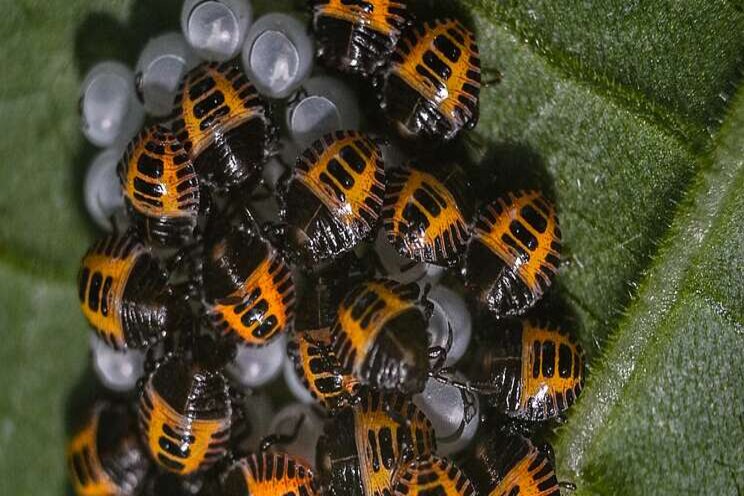Get rid of stink bugs without pests
Added on 03 April 2020

1
Place water in a bucket. Add enough dish soap to make the bucket's water soapy. Put on gardening gloves, and hand-pick adult and young stink bugs from plants. Place each removed stink bug in the bucket's soapy water. Destroy all barrel-shaped, green eggs on the underside of plant leaves by smashing them between paper towel.
2
Plant French marigolds (Tagetes patula) and annual sunflowers (Helianthus annuus) in your garden. These annual flowering plants attract beneficial insects such as ladybugs and lacewings, which prey on stink bug egg masses.
3
Remove weeds and overly grown ground-covers in spring. Doing so eliminates areas for stink bugs to hide and multiply.
4
Hang sticky traps designed to trap stink bugs. Place the traps about 4 to 5 feet above ground level and 10 feet from your home's doors, fruit trees and gardens. The traps typically have a pheromone attractant to help lure stink bugs to the traps.
Things You Will Need
§ Bucket
§ Dish soap
§ Gardening gloves
§ Paper towels
§ French marigolds
§ Annual sunflowers
§ Trowel
§ Sticky traps designed for stink bugs
§ Measuring tape
§ String (optional)
§ Scissors (optional)
Tip
§ Increase the effectiveness of stink bug traps by following the instructions on the traps' packaging.
Source: Homeguides
Photo by Jovana Askrabic on Unsplash
Source: Homeguides
More news















